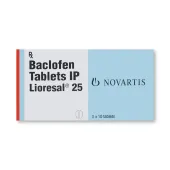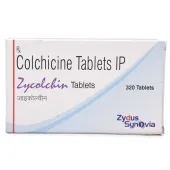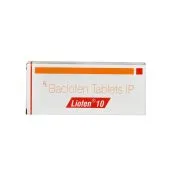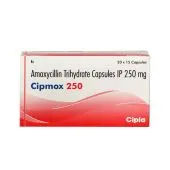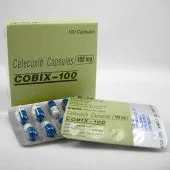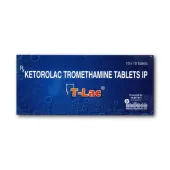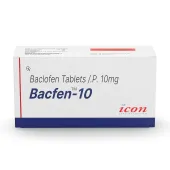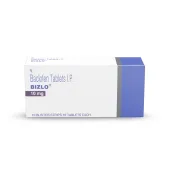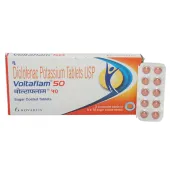Pain Relief

Pain Relief
Pain is an unpleasant sensation and emotional experience linked to tissue damage. Its purpose is to allow the body to react and prevent further tissue damage.We feel pain when a signal is sent through nerve fibers to the brain for interpretation.The experience of pain is different for everyone, and there are different ways of feeling and describing pain. This can makes it difficult to define and treat.Pain can be short-term or long-term, it can stay in one place, or it can spread around the body.
Types Of Pain
Pain can be acute or chronic.
Acute pain is generally intense and short-lived. It is the body's way of alerting a person to an injury or localized tissue damage. Treating the underlying injury normally resolves this type of pain. Acute pain can be further classified into-
-
Somatic pain is superficial pain that is felt on the skin or soft tissues just below the skin.
-
Visceral pain originates in the internal organs and the linings of cavities in the body.
-
Referred pain is felt at a location different to the source of tissue damage, such the shoulder pain felt during a heart attack.
Chronic pain lasts far longer than acute pain. It often cannot be resolved. It can be mild or severe, it can be continuous, as in arthritis, or it can be intermittent, as in migraines. Intermittent pain occurs on repeated occasions but stops in between.
There are more specialized ways to classify pains including-
- Neuropathic pain: This follows injury to the peripheral nerves that connect the brain and spinal cord to the rest of the body. It can take the form of electric shock-like pain, tenderness, numbness, tingling, and discomfort.
- Phantom pain: occurs after the amputation of a limb and refers to painful sensations given out by the missing limb. It affects some 70 percent of amputees.
- Central pain: is often caused by infarction, abscess, tumors, degeneration, or hemorrhage in the brain and spinal cord. Central pain is ongoing and can range from mild to extremely painful. Patients report burning, aching, and pressing sensations.
Common medications
-
Ibugesic
-
Voltaflam
-
Drotin
-
Voveran gel-1%
-
Volini gel etc
Though you can get these products very easily from any offline or online drugstore, make sure you use them in moderation and buy pain relievers only from a reputed online pharmacy.
Alternative Options To Drugs
-
Acupuncture: The use of needles at certain pressure points can provide an analgesic effect.
-
Nerve blocks: These injections can numb a group of nerves acting as a source of pain for a specific limb or body part.
-
Psychotherapy: This can help with the emotional side of ongoing pain. Chronic pain can often affect the enjoyment of everyday activities and can lead to not being able to work. A psychotherapist can help to enhance understanding and put in place lifestyle changes to enable these parts of life.
-
Transcutaneous electrical nerve stimulation (TENS): TENS aims to stimulate the brain's opioid and pain gate systems to provide relief.
-
Surgery: Various surgeries of the nerves, brain, and spine are possible to relieve chronic pain. These include rhizotomy, decompression, and electrical deep brain and spinal cord stimulation procedures.
-
Biofeedback: This is a mind-body technique. Through biofeedback, people can learn to better control their organs and automatic processes, such as their heart rate, with their thoughts.
-
Relaxation therapies: This covers a wide range of controlled relaxation techniques and exercises, mostly in the realm of alternative and complementary medicine. This can include hypnosis, yoga, meditation, massage therapy, distraction techniques, and tai chi.
-
Physical manipulation: a physiotherapist or chiropractor can sometimes help relieve pain by manipulating the tension from a person's back.
-
Heat and cold: Using hot and cold packs can help. These can be alternated or selected according to the type of injury or pain. Some medications have a warming effect when applied topically to the affected part.
-
Rest: If the pain is due to an injury or a repetitive action, rest may be the best option.
Myths/Facts
Myth- All doctors are qualified to treat pain.
Fact- When it comes to treating pain not all doctors are equal. It takes years of specialized training to be able to effectively analyze, diagnose, and treat a patient experiencing chronic pain. In some cases it even requires further specialization to treat pain. When the pain is caused by a rheumatic diseases, like arthritis, or autoimmune diseases, like lupus, a rheumatologist is needed to treat both the pain and the underlying condition.
Myth- There is a “silver bullet” for every type of pain.
Fact- There is almost never one treatment that cures chronic pain. Usually a complete pain management regimen involves many different treatments. Your physician may prescribe things like medication, physical therapy, immobilization, and ice.
Myth- Getting pain treatments means you’re weak.
Fact- Admitting you are in pain and getting treated can be scary. It means you don’t know what is causing the pain and that you are turning over your pain relief treatment to someone else. It actually takes a great deal of courage to seek out medical treatment for your pain.



